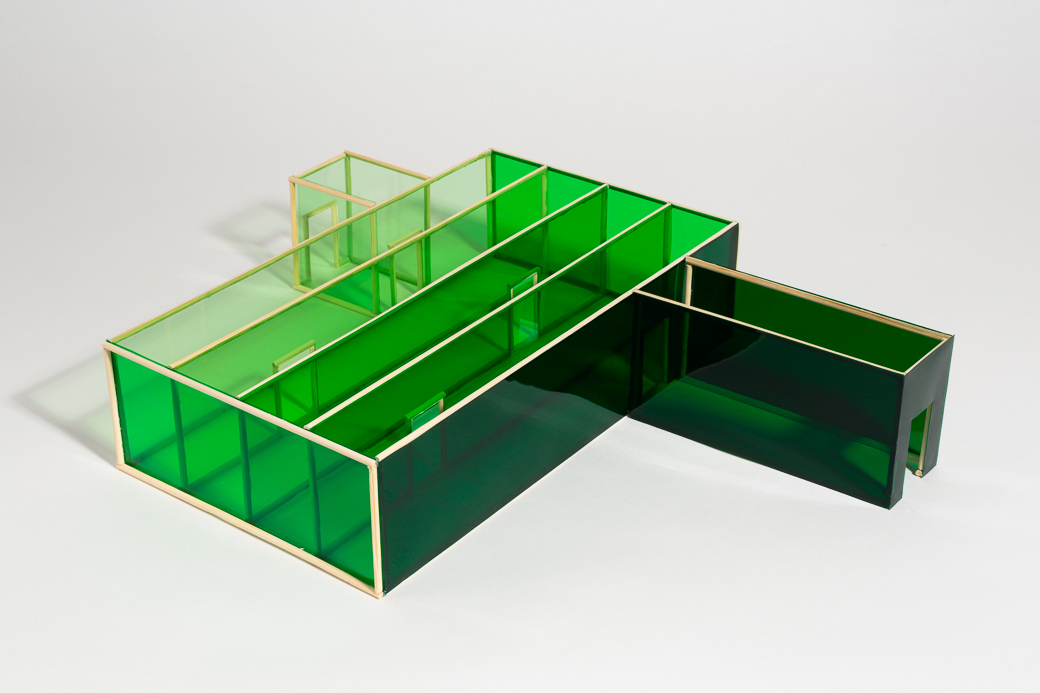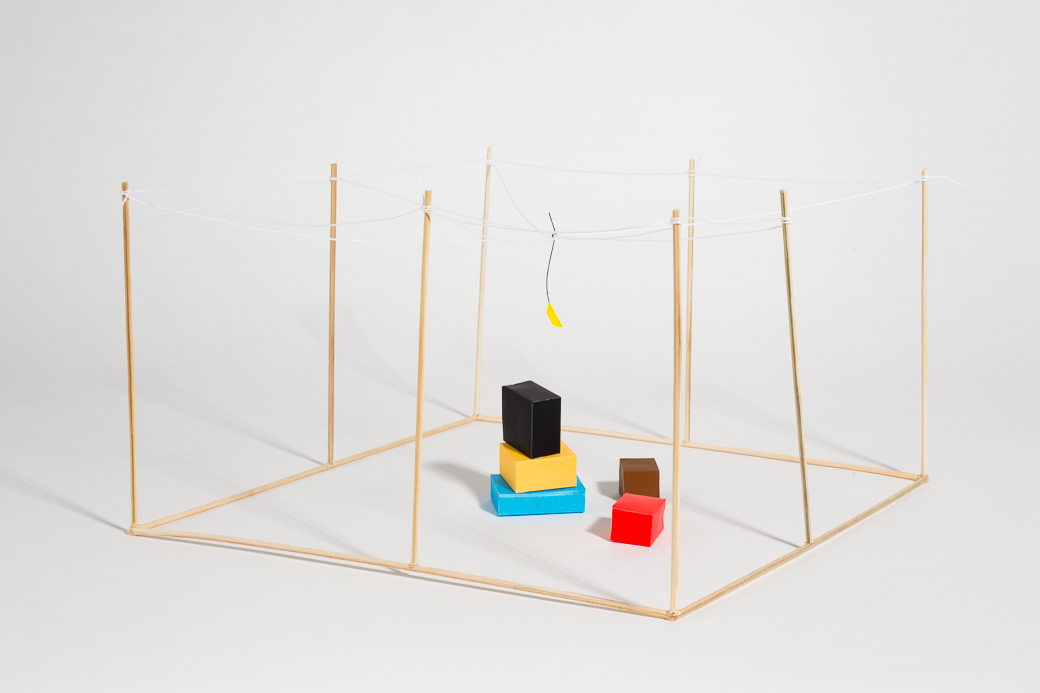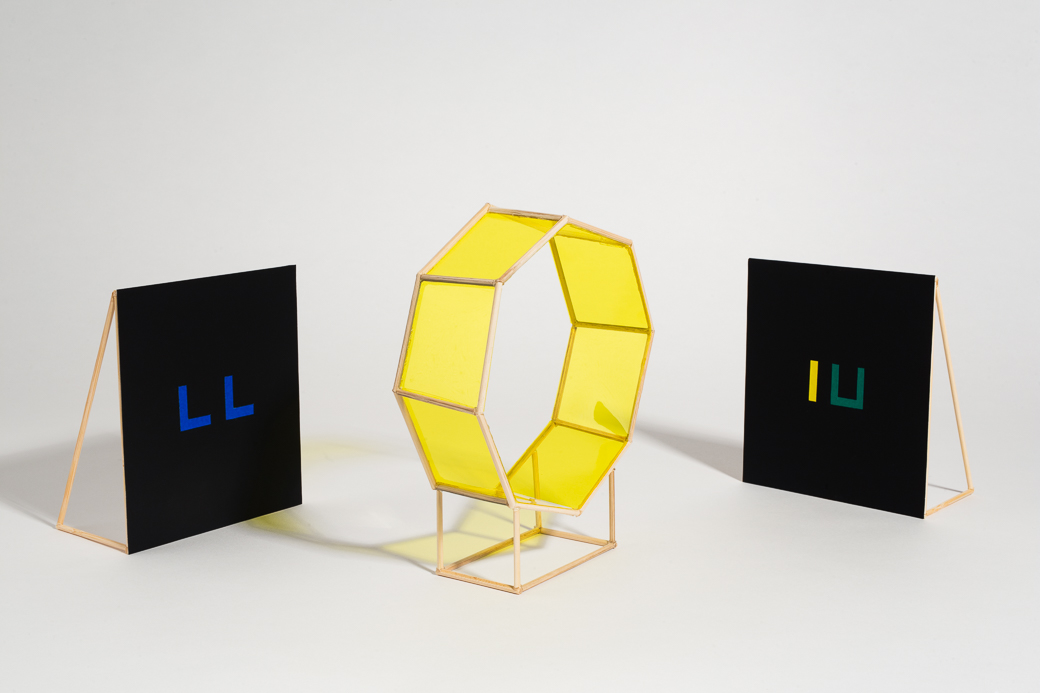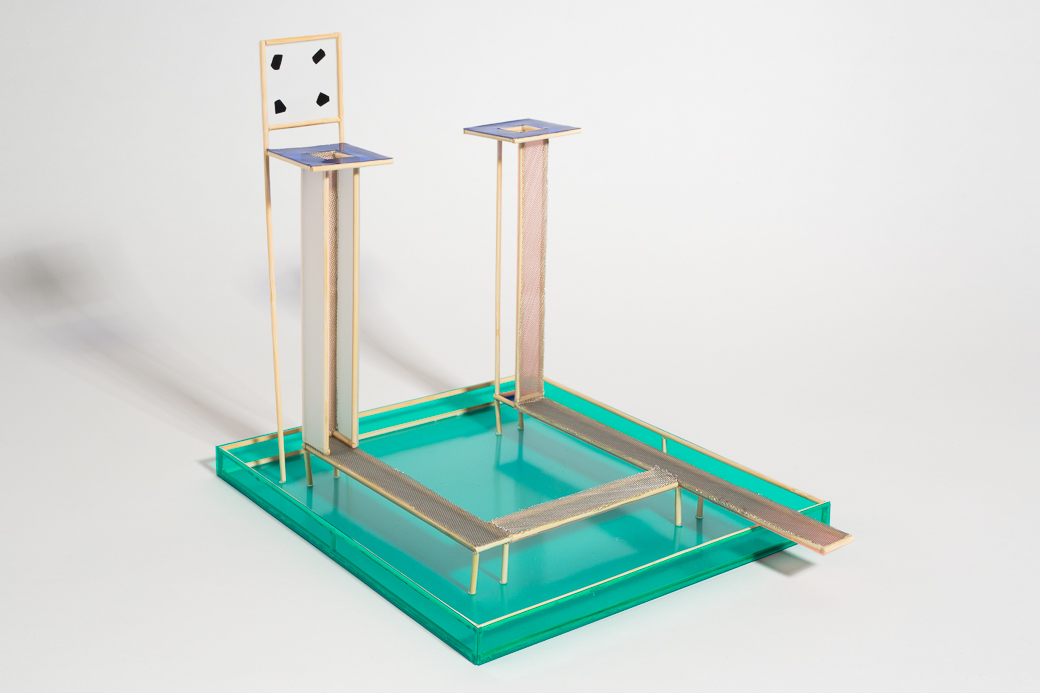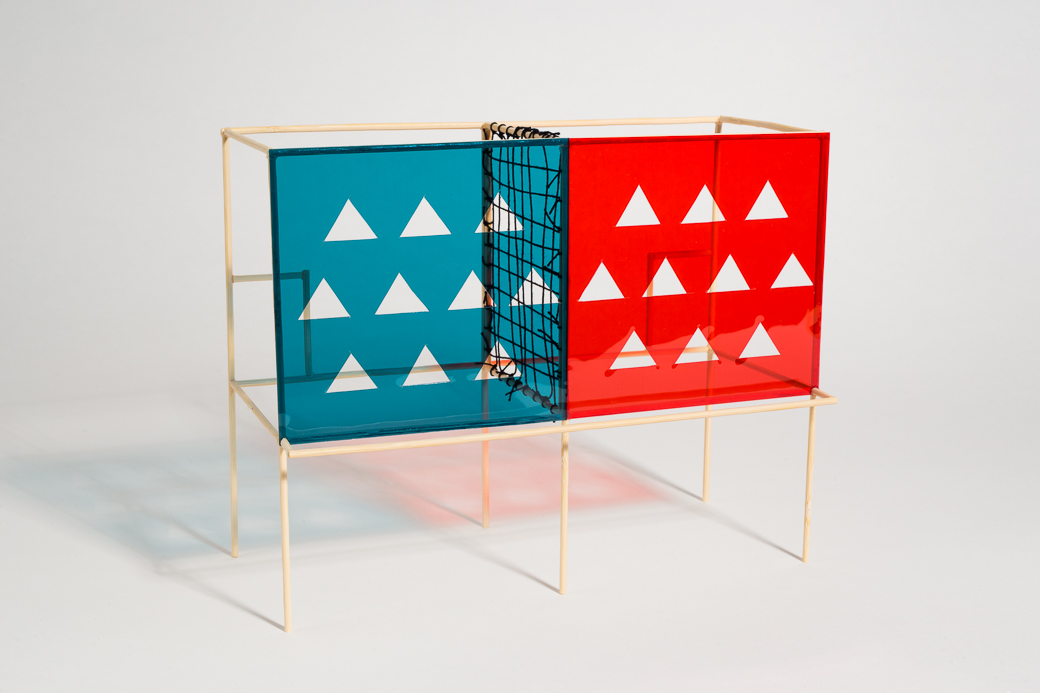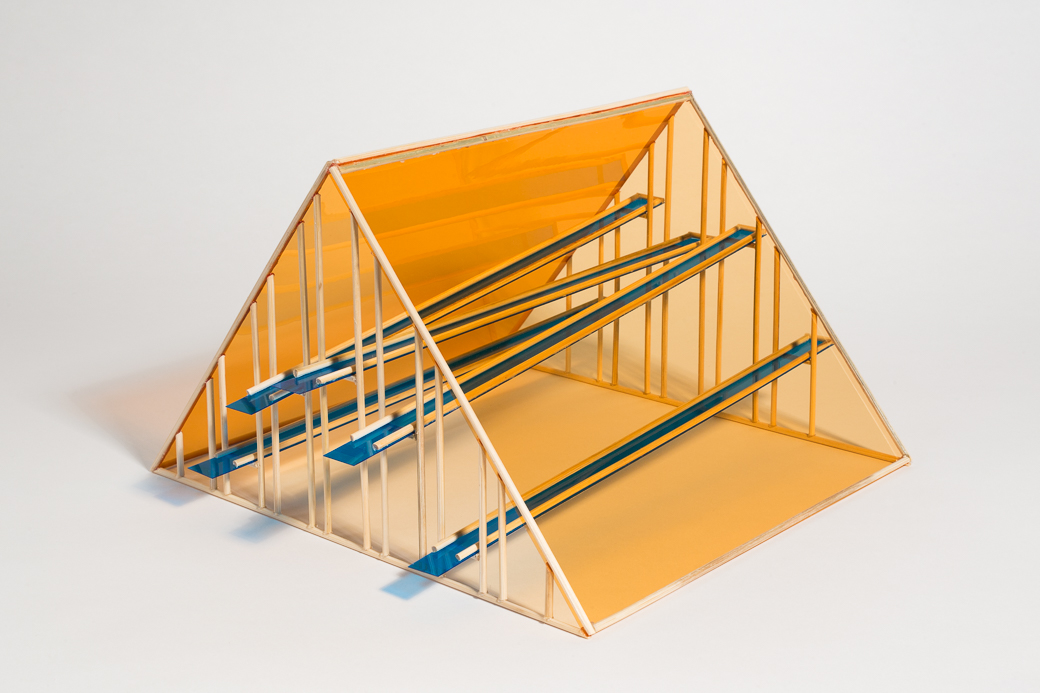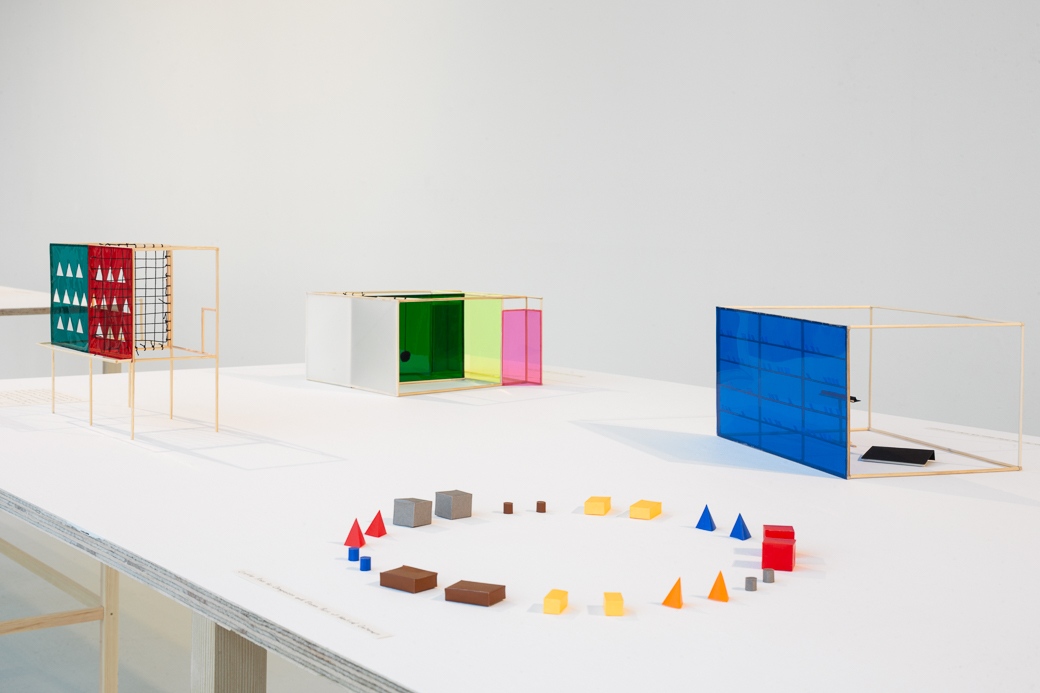Endurance Piece for Blinded and Seeing Rats
Blinded and seeing performers are placed in a maze one at a time until they can perform ten successive runs without error.
Afterwards, using a soldering iron, an assistant destroys a portion of the performer’s brain, and the performer is placed back in the maze.
The process is repeated several times, with increasing portions of the brain destroyed, until the performer is no longer able to run through the maze.
Time and error scores are recorded by an observer.
XX, XY Piece for Newly Hatched Chicks, Running Wheel and Two Monitors
The performers are placed in individual opaque boxes where they hatch in complete darkness. They are then placed in a second opaque box with a monitor and a speaker mounted on the wall.
In this box, the performers learn to associate a visual or acoustic stimulus, or a combination of visual and acoustic stimuli to a parent, a process referred to as imprinting. In this manner, three groups are formed:
A Visual
B Acoustic
C Multimodal (visual and acoustic)
In each group, half of the performers are imprinted with an XX (two identical stimuli) and half with an XY (two different stimuli) pattern for three consecutive days.
After imprinting, the young performers are placed on a running wheel.
On either side of the wheel is a monitor. The XX pattern is presented on one side and the XY pattern on the opposite side.
The direction and the distance the performers run on the wheel is recorded.
Outdoor Score for Small Group of Chimpanzees, Crates, and a Banana
A small group of performers have regular access to a large outdoor holding pen.
One day, a banana is suspended above the pen, out of reach of the performers.
Crates of several sizes and shapes are scattered around. No single crate is big enough for a performer to climb atop and reach the banana.
Morning Piece for Portia Spider
The performance takes place in the morning between 9 am and noon.
The performer is placed at the bottom of a starting tower which is located above a pool of water. From the top of the tower, they are able to see 1 to 6 dead prey mounted on the top of a second nearby tower.
After the performer walks down the tower, they can choose to continue towards the prey or leave the stage.
If they continue, they have to climb the second tower. During this time the prey are out of view and an assistant alters their number by adding or removing one or several.
When the performer reaches the top of the second tower, an observer notes the duration of their hesitation. This time is compared to instances when the number of prey has not been altered.
If the performer takes too long to complete any step in the task, they are removed from the stage. Each performer is allowed to perform only once.
Task-Based Piece for Two Capuchin Monkeys, Cucumbers, and Grapes
Two performers are placed in a cage divided into two equally sized compartments by a mesh partition. The mesh permits visual, vocal, and limited physical contact between the performers. The front of the cage is a transparent plexiglas sheet perforated with holes.
In turn, the performers are given a small rock by an assistant through one of the holes. If they return the rock to the assistant through another hole, they receive a food reward.
The lower-value food reward is one-quarter of a cucumber slice. The higher-value food reward is a grape.
At first, the assistant gives cucumber slices to the first performer and the same reward to the second performer.
After a few repetitions, the assistant continues giving cucumber slices to the first performer, but gives grapes to the second performer.
The reactions of the first performer are recorded.
Indeterminate Piece for Five Squirrels
Three male and two female performers with similar performance experience take residence in a performance centre. From that point onward, they are referred to as:
Arnold
Leonard
Sarah
Simon
Suzy
The performance begins when a performer spontaneously decides to enter the stage through a tunnel from their home-cage.
The stage contains a transparent cube. The cube has several holes on either side, each associated with a lever. Some levers are baited with hazelnuts, others are not baited.
To obtain a nut, the performer needs to push the near-end of a lever and pull the far-end. Not having been deprived of food, the performer may choose to obtain a nut or not.
Twenty-two months after the initial performance, the performers are presented with a similar situation in a pyramidal structure.
Anthology of Performance Pieces for Animals reflects on how the scientific community has approached and depicted animal behaviour and cognition from the early 20th century to the present.
Drawing upon key experiments conducted in laboratories by psychologists, biologists, ethologists, zoologists and neuroscientists, the piece explores the various devices imagined by scientists to test the cognitive abilities of animals, including the examination of memory, spatial awareness, numerosity, and communication.
The animals involved in these experiments include rats, capuchin monkeys, mallard ducklings, chimpanzees, mice, Asian elephants, dogs, Portia spiders, cats, pigeons, squirrels, lizards, cichlid fish, lambs, chicks, cobra snakeskin guppies, ravens, toads, crickets, octopuses, horses, and raccoons.
The work takes the form of an artist book as well as scaled models of experimental apparatus alongside texts which read as instructions for performances. Through this treatment, the work explores what happens when animals involved in research are depicted as active participants, as performers, who give meaning to the situations in which they are placed.
Anthology of Performance Pieces for Animals, 2018-ongoing, installation including a series of sculptures and texts: bamboo, coloured gel, string, metal wire, plastic, ink, paper, aluminum foil, and wood, dimensions variable. Installation view, Volt, USF Visningsrommet, Bergen, Norway.
Anthology of Performance Pieces for Animals (2018)


